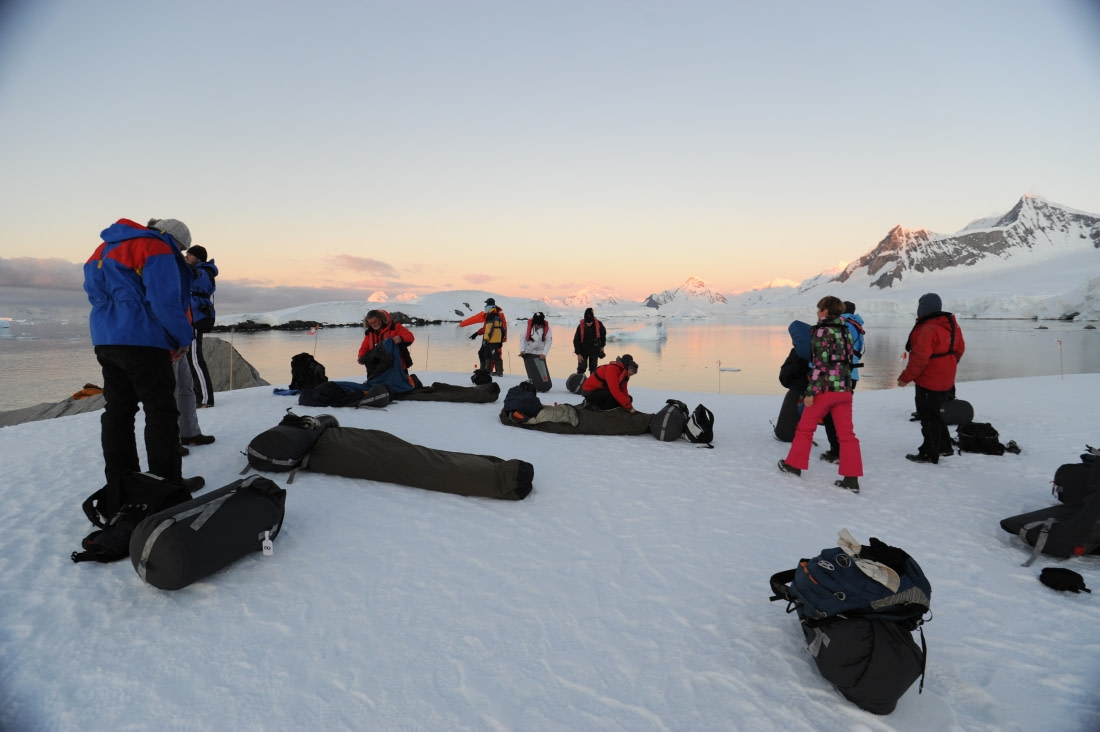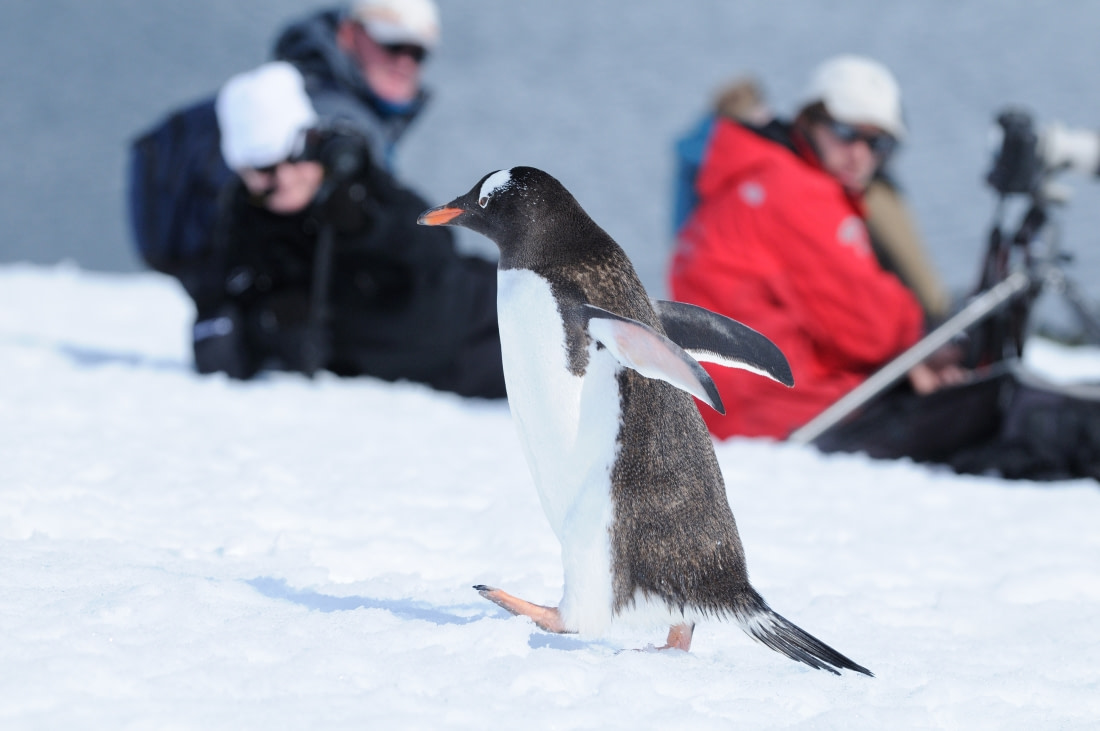You don't require a crystal ball to recognize that if you've been envisioning the sight of penguins waddling, whales breaching, and colossal icebergs, embarking on an Antarctica expedition is destined for you. However, what your dreams might not reveal is the optimal time to visit Antarctica! This crucial information is essential for turning your dream vacation into reality, and the informative guide is here to provide all the details about when to journey to the white continent.
It's a rare traveler who doesn't have Antarctica listed among their travel aspirations. It stands out as a destination that offers complete seclusion, brimming with fascination, awe, and surprises. Moreover, its history of bold undertakings sheds light on the enduring spirit of humanity. The decision of when to visit Antarctica is as crucial as the choice of thermal gear and the consideration of storage capacity for your camera or phone (hint: you'll need more than you think).
Pinpointing the best time of the year to explore Antarctica goes beyond a simple recommendation like "mid-December to mid-February," when wildlife is most active. If you seek the quintessential Antarctic experience, considering the start and end of the season would be suitable. Alternatively, if your desire has been sparked by watching "Happy Feet," and you yearn to witness young penguins taking their inaugural plunge, then opting for a February departure is advised.
Drawing on the decades of expertise in expedition cruising, we've crafted a detailed month-by-month travel guide, spanning from the commencement of the voyages in October to the conclusion of the season in March. In the perspective, there is no definitive best or worst time to travel to Antarctica. Each sailing, throughout this period, boasts absolute highlights!

When is the Ideal Time to Visit Antarctica?
One might perceive Antarctica as having just one perpetual season of cold, but in reality, it experiences two distinct seasons – winter and summer. These seasons are a consequence of the Earth's tilt and orbit around the sun, impacting weather patterns, wildlife behavior, and influencing the strategic planning of your visit.
Winter in Antarctica
During a span of six months, Antarctica becomes encircled by sea ice, creating nearly insurmountable barriers to access. Winter also heralds an extended period of darkness, commencing around June 21, when the sun disappears beyond the horizon for several weeks.
Winter is marked by the initiation of the whales' lengthy migration toward the equator for breeding. The penguins, eagerly anticipated by many, also head north as the ice edge advances. Notably, the resilient emperor penguin is the only warm-blooded creature audacious enough to endure Antarctica's most hostile months. The scarcity of access and the migration of most wildlife northward indicate that winter is far from the ideal time to undertake a visit.
Summer in Antarctica
In the natural order, equilibrium prevails – what is dark transitions to light, and what is cold warms up, albeit slightly, in Antarctica's case. As the sun makes its return, the sea ice begins to break loose, heralding the return of the splendid residents – whales, penguins, seals, and sea birds. The enthusiastic crew, Expedition Leader, and onboard experts of prepare to embark on a new season of adventures to the white continent.
With the opportune times to travel to Antarctica spanning half the year, it's unsurprising that there are fluctuations and shifts during this extensive window for exploration. Understanding the best months aligning with your travel goals is imperative, providing a clearer understanding of when to set sail.
Selecting the optimal time to travel to Antarctica involves being aware of available activities and the periods when wildlife is most active. Irrespective of the month, Antarctica unfurls its unique charms each season. The sole drawback of an Antarctic expedition lies in the inevitable conclusion of the journey!
October & November
Quick Guide: These months offer an untouched Antarctica with pristine landscapes, abundant sea ice, and ample adventure opportunities.
Embarking on an expedition in October and November immerses you in unspoiled Antarctica, characterized by fresh white snowscapes, serene luminous sunsets, and an ocean adorned with residual sea ice. Photography enthusiasts will find this period particularly enticing, as the onboard professional photographer is readily available to enhance your results – a noteworthy feature on every sailing.
October heralds the mass return of penguins to the Antarctic Peninsula. Witnessing their characteristic waddle across a snowy slope creates a lasting memory. Lucky observers may even catch glimpses of penguins building nests from small stones, engaging in intricate courtship rituals.
From October onward, whales also reappear in their feeding grounds. While Antarctica hosts eight whale species, three particularly thrilling varieties captivate onlookers with their actions.
For those who relish a workout during holidays, the deep snow at certain landing sites serves as your training ground. Pre-trip conditioning proves beneficial for departures during this time, and packing trekking poles or utilizing the ones provided onboard is advisable (more on packing details later).
By November, the sight of a penguin egg nestled between the legs of its parent evokes awe. The timing of seasonal events may vary across locations, making November an opportune month for witnessing the heartwarming spectacle of elephant seal pups being hauled from the ice by their colossal parents. Notably, these pups cannot enter the water until their molting process is complete.
An added advantage for early-season travelers with an inclination for active pursuits is the potential for extra activities placing them in the midst of the action. Options like camping on the ice, snowshoeing, and skiing and snowboarding (additional costs may apply) elevate the experience. The sought-after Spirit of Antarctica departures cater to those seeking unique add-on activities.

December & January
Quick Guide: These months boast stable weather, smoother landings, and the presence of newborns and juveniles across the continent, making December and January highly favored.
The familiar warmth of summer pervades all species during this period, with penguin colonies bustling with new life and devoted parents. Witnessing the fluffy down of a penguin chick is sure to evoke warm and fuzzy feelings, and it provides an excellent opportunity for capturing fabulous photos.
But it's not just about penguins; by December, the ocean becomes a hive of activity, teeming with whales feeding and crabeater seals gracefully hauling their rotund bodies onto ice floes. Occasionally, the appearance of an elephant seal adds a touch of celebrity to the Antarctic scene. Many consider December particularly special, as it offers the chance to experience the quintessential white Christmas or sail into a New Year in an entirely novel way.
In a parallel to Januarys worldwide, the younger members of Antarctica's inhabitants, the penguin chicks, are becoming more energetic, forming creches and joyfully tearing through the colony. Simultaneously, the adults commence their molting process.
Across the continent, the melting of sea-level snow reveals rocky terrain as the days grow warmer and temperatures rise. Once the sea ice has melted, crossing the Drake Passage becomes more manageable and traditionally calmer.
Both December and January optimize your activities and Zodiac expedition time, providing approximately 20+ hours of daylight. This extended daylight period allows for more opportunities to engage in the optional polar kayaking and scuba diving activities. Taking the plunge into the icy waters becomes the ultimate way to experience Antarctica, especially for those brave enough to embark on the polar plunge!

February & March
Quick Guide: These months are optimal for whale-watching, showcasing breathtaking sunrises and sunsets, along with surprising bursts of color across the White Continent.
February stands out as an excellent time for an Antarctica cruise, especially for wildlife enthusiasts. The breeding frenzy has subsided, and adult penguins have completed their molting process. It marks a crucial period for many offspring to test their newly waterproofed plumage.
The young penguins, born earlier in the summer, swiftly navigate through adolescence, preparing for their maiden voyage into the sea. Be ready with a charged camera as these daring adolescents take their tentative first steps into the water, creating a sense of parental pride akin to watching one's own offspring.
February and March emerge as the prime months for witnessing whales in Antarctica, as they indulge in a feast on abundant krill. Keep an eye out for leopard seals resting on the ice near penguin colonies.
Similar to autumn in various destinations, bursts of color adorn the ice with vibrant splashes of pink and green, courtesy of snow algae. While this 'watermelon snow' may resemble toppings on an ice cream, resist the temptation to taste it, as it has a laxative effect.
March, akin to the beginning of the season, brings shorter days, fading light, and breathtaking sunrises and sunsets, leaving photographers (and passengers) in awe. The reappearance of floating sea ice intensifies the impending winter atmosphere.
For those eager to witness these wonders, February departures on the Antarctic Explorer provide an ideal opportunity. Alternatively, a March trip, such as Wild Antarctica, offers an epic fly-sail adventure, ensuring a remarkable conclusion to the Antarctic expedition.
